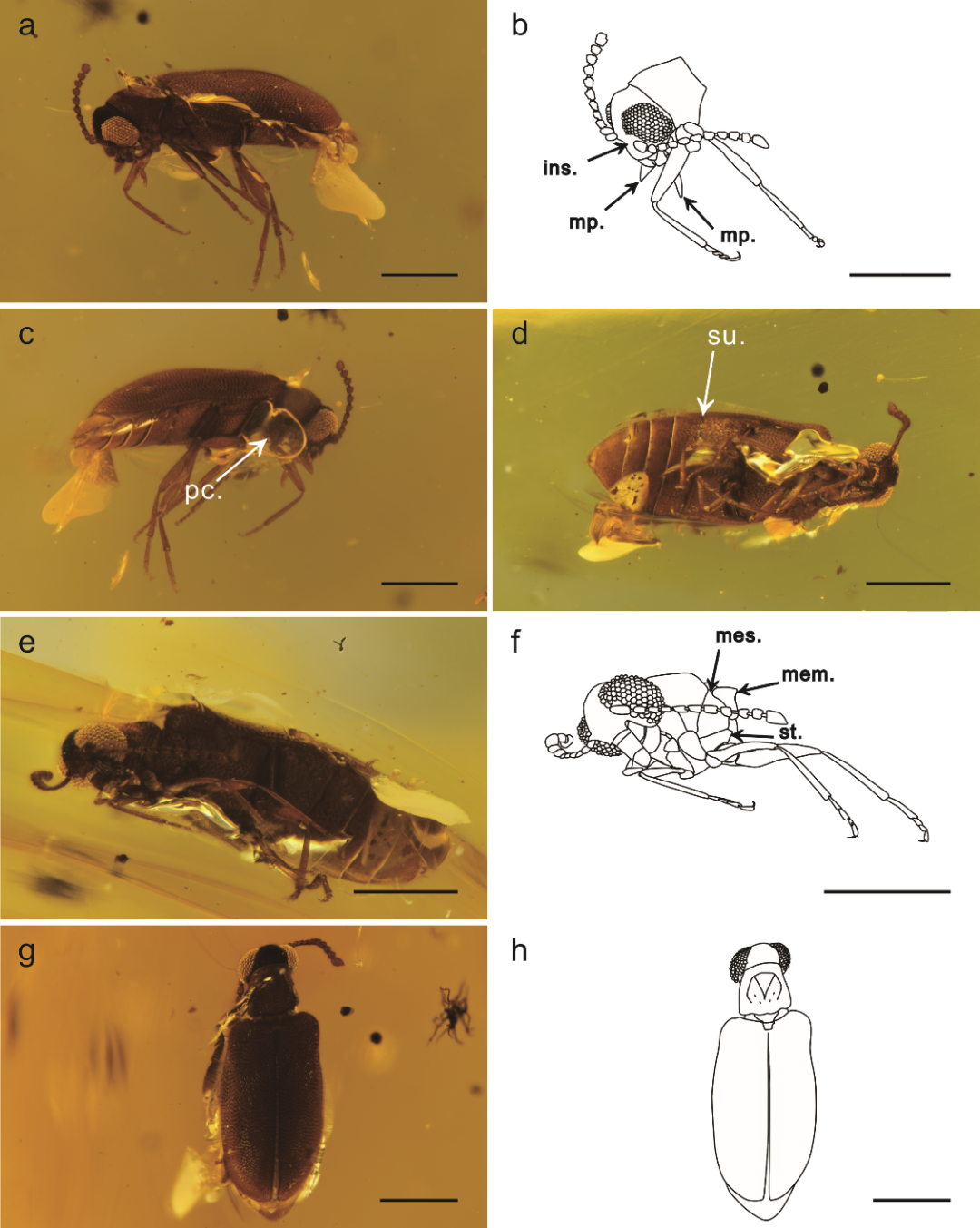Source: School of Ecology
Written by: Liang Bao
Edited by: Zheng Longfei, Wang Dongmei
Recently, the palaeontology research group at School of Ecology, Sun Yat-sen University, analyzed and identified a saproxylic beetle preserved in a piece of the Cretaceous Burmese amber. A new species, Gryzmalia wukong Bao, Bao et Alekseev, 2022 (genus named after Coleopteran Dr. Gryzmala) was established, which showed new insights of their palaeoecology.
Family Aderidae (Polyphaga: Aderidae), commonly known as (puppet beetles), is a moderately sized beetle lineage that currently includes approximately 1000 species, arranged assigned in 45 genera and two subfamilies, distributed throughout all major biogeographic regions of the world except Antarctica. Feeding strategies of extant aderids varies with different living environment. Current data shows that adult aderid beetles most commonly occur on vegetation located near the edges of forests; aderid larvae are saproxylophagous and usually develop in tree hollows, leaf litter, rotting wood, under bark. Aderidae is poorly represented by fossils. The fossil record with a detailed taxonomic description and valid identification was previously found only in Baltic amber (Eocene, 44Mya).
G. wukong is the earliest Aderidae record (99Mya). Compared to other genera of Aderidae, G. wukong has following distinct characteristics: (1) elytral pubescence uniseriate; (2) metafemora without a comb of setae on the postero-ventral face (but with a row of modified setae along almost the entire length of the femur) and without distinct excavations; (3) suture between abdominal ventrite I and abdominal ventrite II complete, discernible medially and laterally (Fig 1d).

Fig 1. Gryzmalia wukong Bao, Bao et Alekseev, 2022. Micro-imaging and structural reconstruction.
G. wukong shows high similarity with the modern tribe Euglenesini. A saproxylophagous mode of life at the larval stage, as observed in extant representatives of the family, as well as the probable association of the beetle with the forest habitat in the Late Cretaceous, is suggested. This research enriched the Coleoptera diversity of Burmese amber forest.
Mr. Bao Liang, Dr. Tong Bao, Prof. Pang Hong (School of Ecology, Sun Yat-sen University) cooperated with Dr. Alexeev V. (Immanuel Kant Baltic Federal University), Dr. Liu Zhenhua (Institute of Zoology, Guangdong Academy of Sciences) proceed and performed the research. The result is published in the journal Cretaceous Research. This study is supported by a research grant from the Sun Yat-sen University Hundred-Talent Programme, Strategic Priority Research Program of the Chinese Academy of Sciences, and the State Key Laboratory of Biology and Geology.
Link to the article: https://doi.org/10.1016/j.cretres.2022.105178
